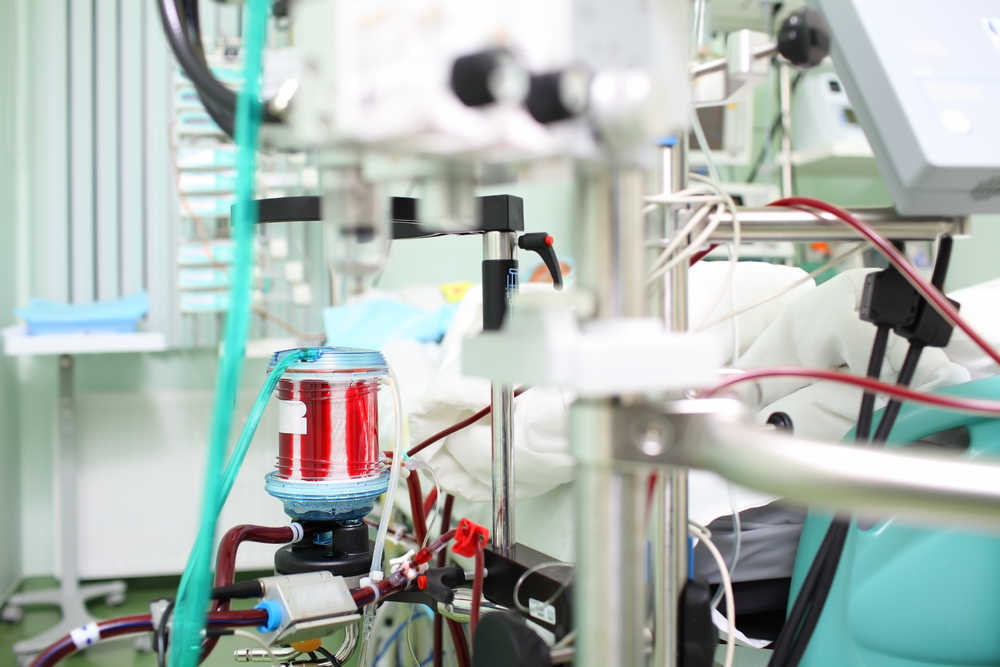How to organise ECMO programmes for cardiac failure in adults

How to organise ECMO programmes for cardiac failure in adults
ARTICLE REVIEW
Despite advances with Extracorporeal membrane oxygenation (ECMO) and emerging evidence guiding the use of this therapy, there remains a need for additional evidence to guide best practices in critically ill patients with cardiac failure and cardiac arrest [1,2]. Venoarterial ECMO is one of several short-term, or temporary mechanical circulatory support (MCS) options, i.e., catheter- or cannula-based vascular access with mechanical pumps that are used for first-line rescue therapy in patients with refractory cardiogenic shock [3,4]. This recently published position paper, written by a multidisciplinary team of experts highlights key aspects of care delivery, with the goal of codifying the current use of this rapidly growing technology [5].
Firstly, rigorous patient selection and careful attention to potential complications should be key factors in guiding decision-making and optimising patient outcomes [6,7]. But for some indications, there are not enough data to create definitive criteria. This is particularly relevant for units that operate programmes, which perform both Extracorporeal Cardiopulmonary Resuscitation (ECPR) as well as ECMO for cardiogenic shock, where decisions often have to be made with limited clinical information. The recent development of prognostic scoring systems, such as the Survival After Venoarterial ECMO (SAVE) score, may help guide clinicians in selecting appropriate candidates for ECMO [7,8].
The authors recommend that ECMO for cardiac failure should ideally be performed at experienced, high-volume centres with a minimum of 30 cases per year and with advanced cardiac capabilities, including percutaneous coronary interventions (PCI) and long-term heart replacement therapy [9,10]. ECPR may also take place in the pre-hospital setting, which is a venue under active investigation [11,12], therefore such centres should have multidisciplinary teams available 24 h a day, 7 days a week, and should ideally be equiped with mobile ECMO teams capable of cannulation and retrieval of patients from other facilities with limited ECMO ability.
Further recommendations suggest that ECMO centres should adhere to best practices and routinely perform quality assurance assessments to ensure they are meeting acceptable clinical standards. Participation in national or international databases provides a standard against which programmes can benchmark their performance. Given the relative lack of high-level evidence for ECMO in cardiac failure, ECMO centres are encouraged to participate in large, multicentre registries, such as with the Extracorporeal Life Support Organisation (ELSO), as well as research consortia, such as the International ECMO Network (ECMONet), whose missions are to better study and elucidate the role of ECMO, including in cardiac failure and cardiac arrest in adults.
Finally, each ECMO centre should ensure appropriate short and long-term follow-up for patients who survive having received ECMO, with specialty-specific consultation as needed, particularly for those with ongoing heart failure and those at risk for delayed mortality.
In conclusion, ECMO for cardiac failure is a high-risk and complex therapy. ECMO will very likely continue to play a vital role in the management of cardiovascular failure, and it should be performed responsibly within a given centre or within a network of centres, by clinicians with appropriate expertise. More precisely defining the role of ECMO in cardiac failure, and the optimal techniques that should be utilised, will require further evidence.
Article review submitted by NEXT and EJRC Member Temistocle Taccheri, Department of Anaesthesiology and Intensive Care Medicine, A. Gemelli School of Medicine University of Sacred Heart Rome.
References
- Paden ML, Rycus PT, Thiagarajan RR, Registry E (2014) Update and outcomes in extracorporeal life support. Semin Perinatol 38:65–70
- Stretch R, Sauer CM, Yuh DD, Bonde P (2014) National trends in the utilisation of short-term mechanical circulatory support: incidence, outcomes, and cost analysis. J Am Coll Cardiol 64:1407–1415
- Abrams D, Combes A, Brodie D (2014) Extracorporeal membrane oxygenation in cardiopulmonary disease in adults. J Am Coll Cardiol 63:2769–2778
- Van Diepen S, Katz JN, Albert NM, Henry TD, et al. American Heart Association Council on Clinical Clinical Cardiology, Council on Cardiovascular and Stroke Nursing, Council on Quality of Care and Outcomes Research, Mission: Lifeline (2017) Contemporary management of cardiogenic shock: a scientific statement from the American Heart Association. Circulation 136:e232–e268
- D Abramsl, A. Garan, A Abdelbary, M Bacchetta. Position paper for the organisation of ECMO programmes for cardiac failure in adults. Intensive Care Med https://doi.org/10.1007/s00134-018-5064-5
- Ponikowski P, Voors AA, Anker SD, Bueno H, et al. 2016 ESC guidelines for the diagnosis and treatment of acute and chronic heart failure: the Task Force for the diagnosis and treatment of acute and chronic heart failure of the European Society of Cardiology (ESC). Developed with the special contribution of the Heart Failure Association (HFA) of the ESC. Eur J Heart Fail 18:891–975
- Rihal CS, Naidu SS, Givertz MM, Szeto WY, et al. 2015 SCAI/ACC/HFSA/ STS clinical expert consensus statement on the use of percutaneous mechanical circulatory support devices in cardiovascular care. J Am Coll Cardiol 65:2140–2141
- Muller G, Flecher E, Lebreton G, Luyt CE, et al. The ENCOURAGE mortality risk score and analysis of long-term outcomes after VA-ECMO for acute myocardial infarction with cardiogenic shock. Intensive Care Med 42:370–378
- Broman LM, Holzgraefe B, Palmer K, Frenckner B. The Stockholm experience: interhospital transports on extracorporeal membrane oxygenation. Crit Care 19:278
- Peek GJ, Mugford M, Tiruvoipati R, Wilson A, et al. Efficacy and economic assessment of conventional ventilatory support versus extracorporeal membrane oxygenation for severe adult respiratory failure (CESAR): a multicentre randomised controlled trial. Lancet 374:1351–1363
- Lamhaut L, Hutin A, Puymirat E, Jouan J, et al. A pre-hospital extracorporeal cardio pulmonary resuscitation (ECPR) strategy for treatment of refractory out hospital cardiac arrest: an observational study and propensity analysis. Resuscitation 117:109–117
- Assistance Publique – Hôpitaux de Paris. A comparative study between a pre-hospital and an in-hospital circulatory support strategy (ECMO) in refractory cardiac arrest (ACPAR2). In: ClinicalTrials.gov [Internet]. Bethesda (MD): National Library of Medicine (US). [cited 2017 Jun 27]. NLM Identifier: NCT02527031.